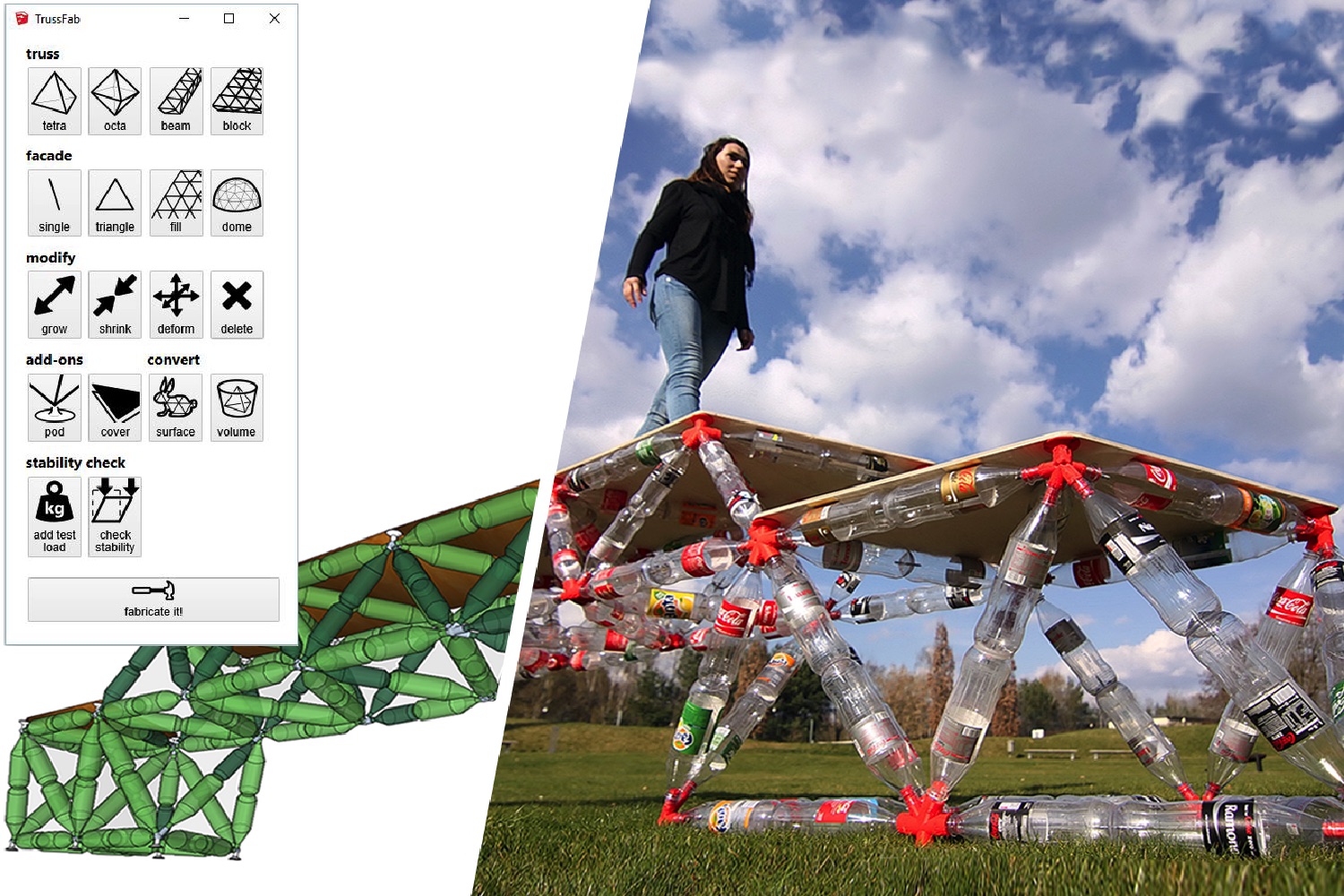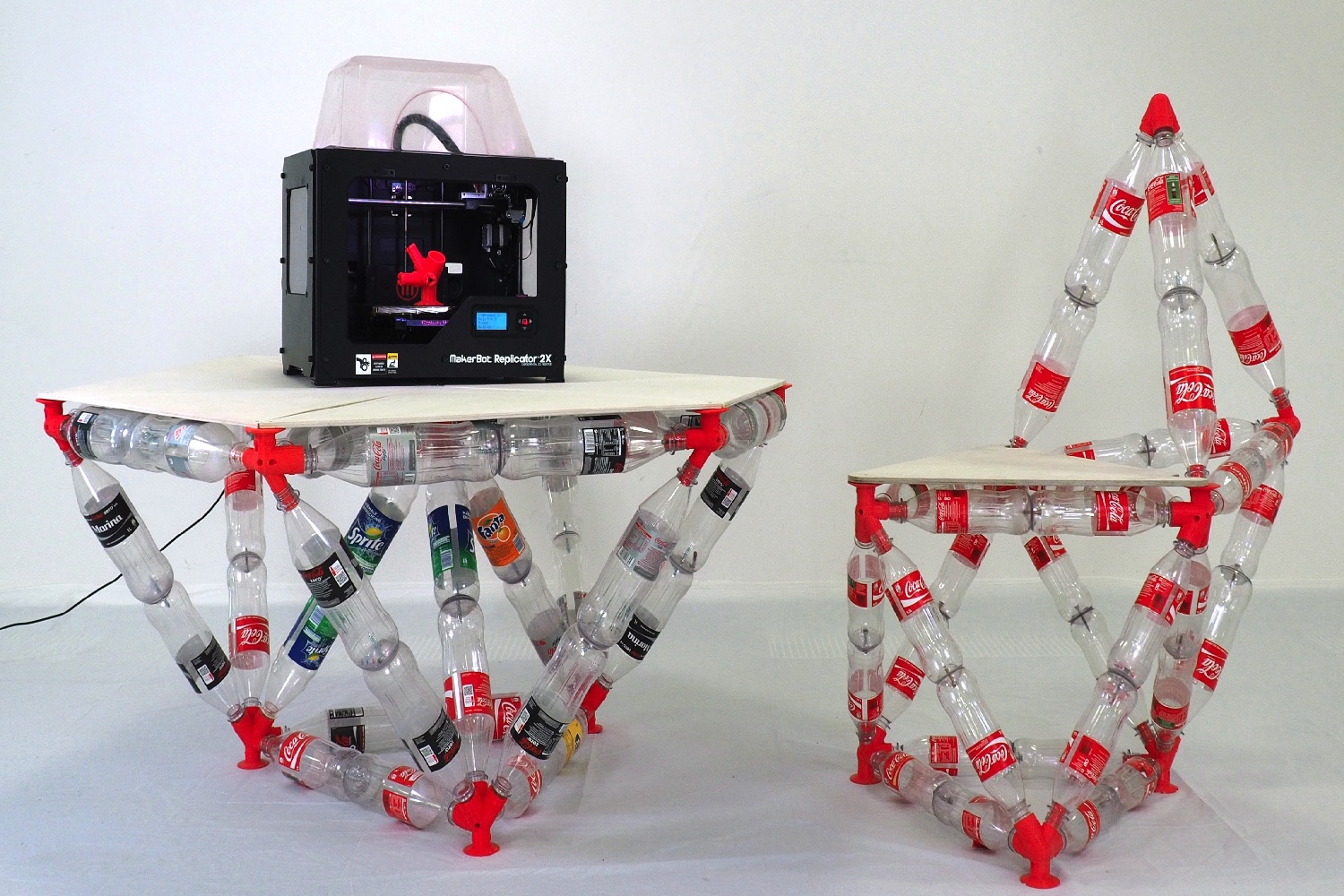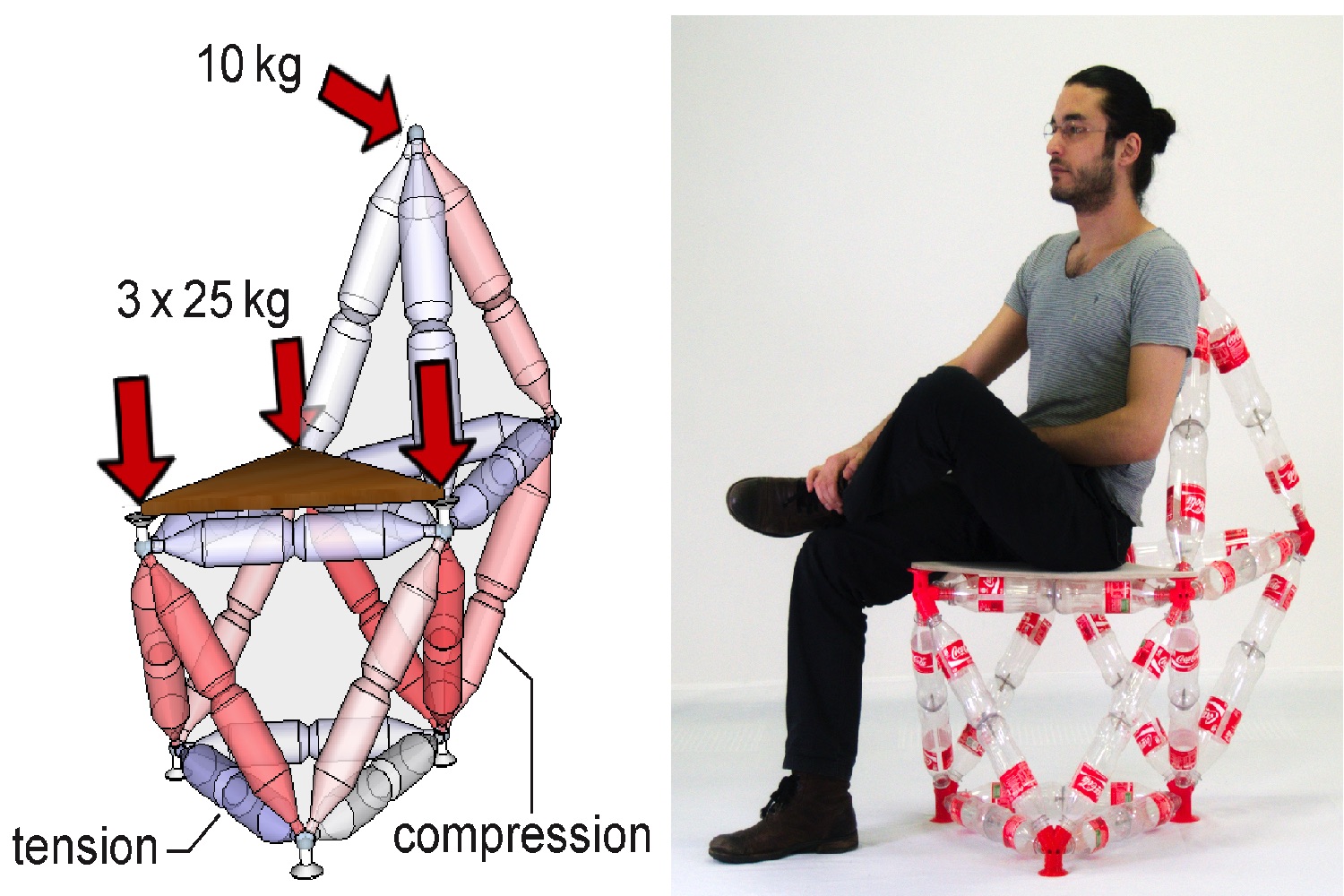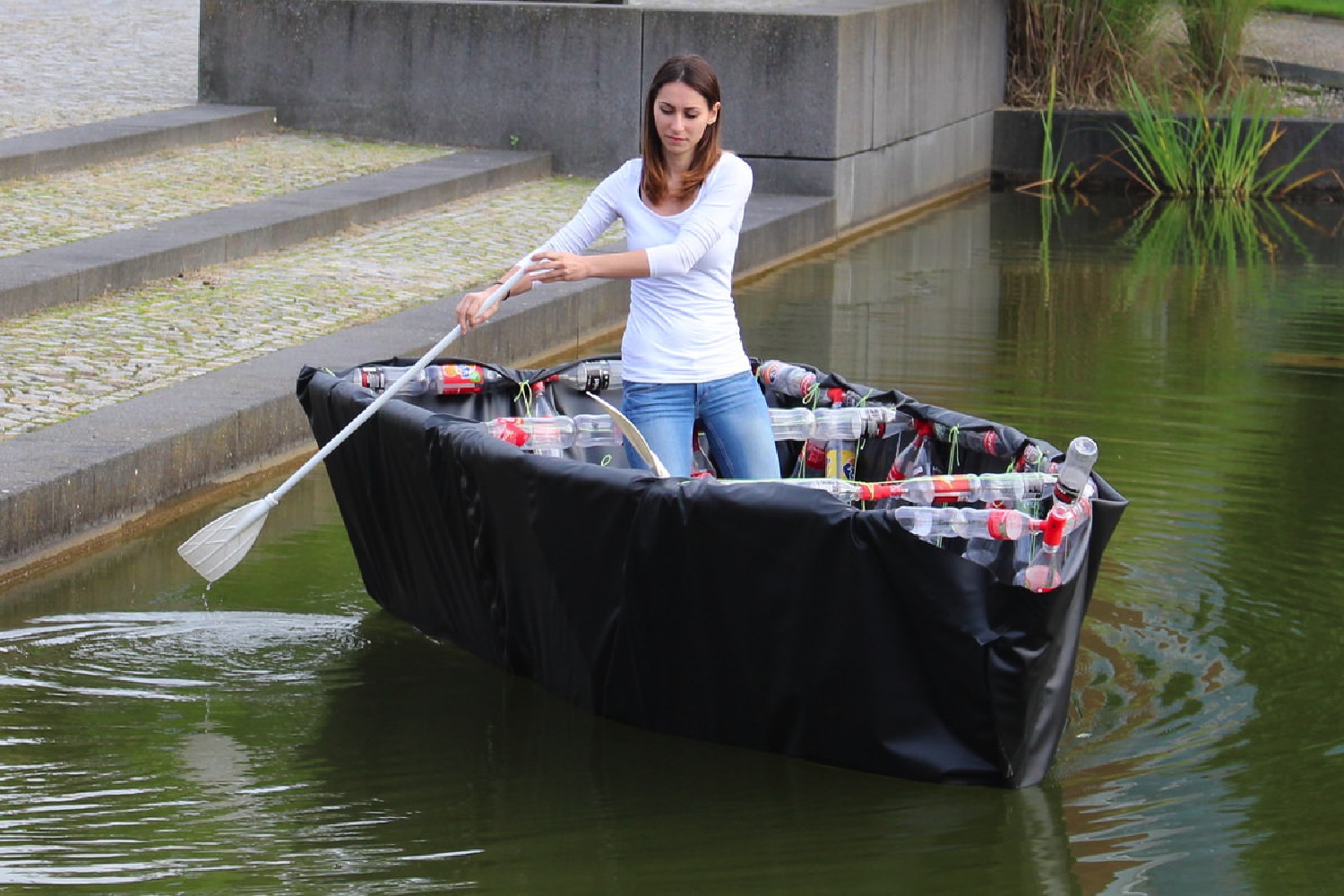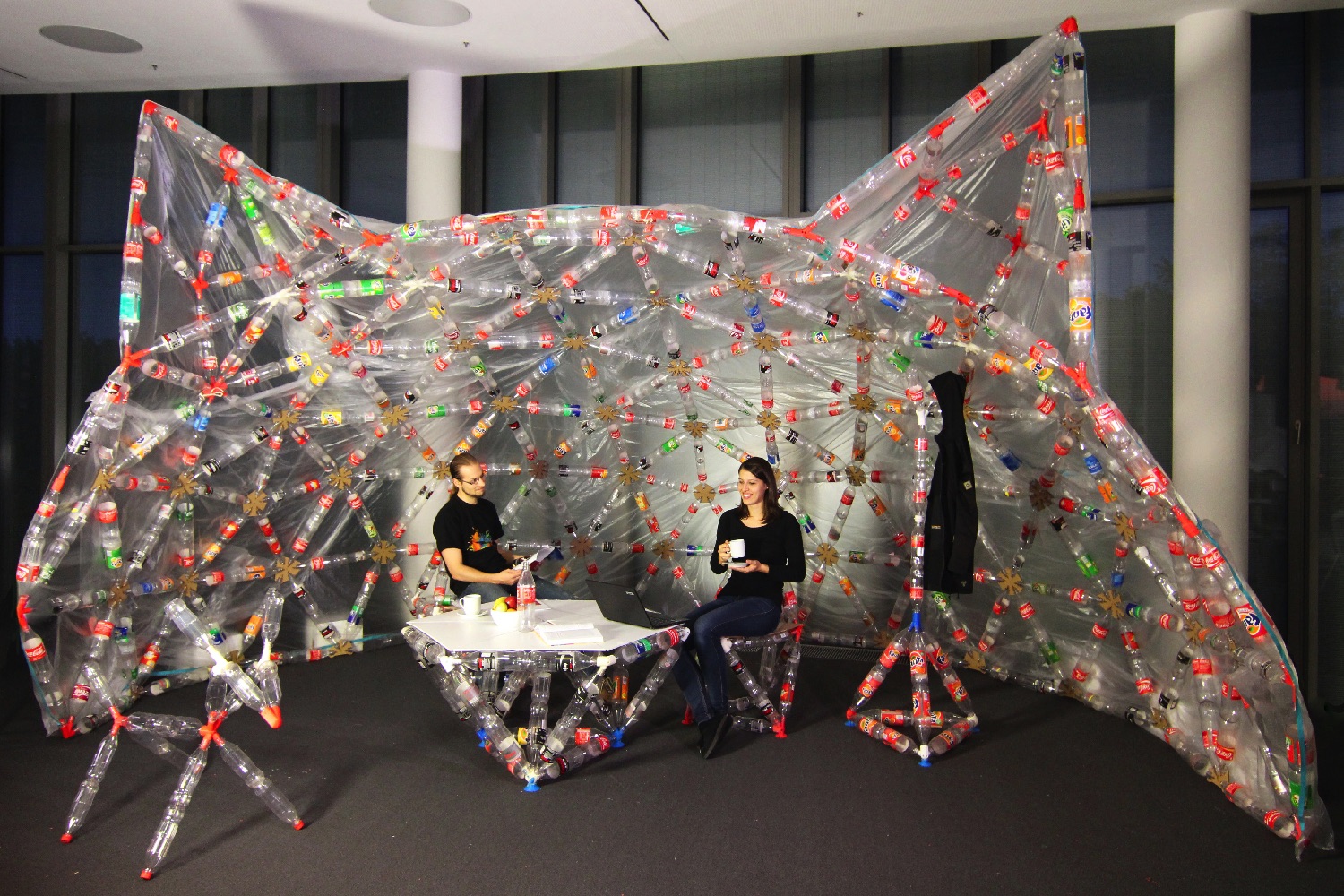A cutting-edge, eco-friendly research project being carried out at Germany’s Hasso Plattner Institute aims to put those bottles to good use — by using them as building blocks for everything from chairs to a rowboat to an impressively large plastic dome structure.
“Our original motivation came from a desire to increase the capabilities of desktop 3D printers,” Róbert Kovacs, a PhD researcher at Hasso Plattner Institute’s Human Computer Interaction Lab, told Digital Trends. “In particular, we wanted to work out how to create large objects using these machines that normally print much smaller objects. We thought we could do this by creating connectors for joining larger pre-existing objects — and soda bottles seemed to be the perfect choice for that.”
With that in mind, the team developed software called TrussFab. TrussFab is an integrated end-to-end system that allows users to design their object of choice, and then works out the correct distribution of plastic bottles to create a structurally sound end product.
As it turns out, while plastic bottles are thought of as being pretty flimsy, they’re actually extremely strong when pushed or pulled along their main axis. Using 3D printing, TrussFab lets makers print the connecting pieces between the bottles to link them together in a honeycomb-type formation.
“Our other intention with the project was to encourage recycling,” Kovacs continued. “We wanted to make people more aware that the bottles they throw away can be a great source of material, and aren’t just trash. Even the 3D-printed connectors can be produced from recycled materials, which means that the entire structures can be made from plastic bottles in some way.”
So far, the team has used TrussFab to build an 8-foot bridge strong enough to carry a human, a table and chair set, a functional boat that seats two, and a 16.5-feet dome consisting of 512 bottles.
The team next plans to make TrussFab freely available over the next several weeks, which will no doubt result in a whole new wave of creations. Keep watching this space — and drink an extra bottle of Coke here and there to start building up your supplies!
